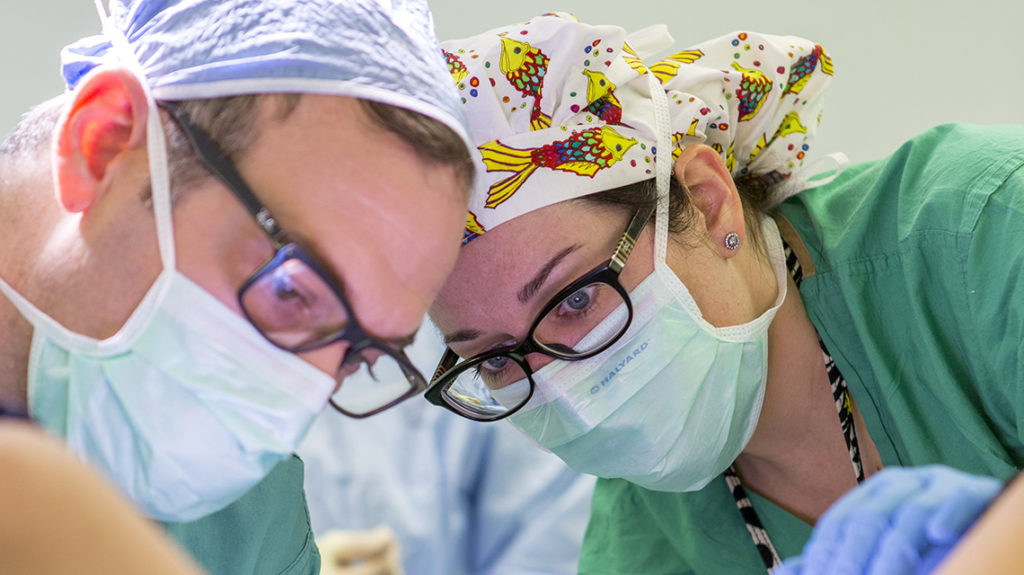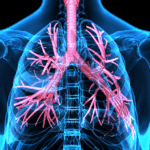Study Shows 1 in 4 Girls Born With Anorectal Malformations Have Co-occurring Gynecologic Anomalies
Study Shows 1 in 4 Girls Born With Anorectal Malformations Have Co-occurring Gynecologic Anomalies https://pediatricsnationwide.org/wp-content/uploads/2020/09/CCPR-surgeons-header-1024x575.jpg 1024 575 Jessica Nye, PhD Jessica Nye, PhD https://secure.gravatar.com/avatar/?s=96&d=mm&r=g- September 02, 2022
- Jessica Nye, PhD

Gynecological anomalies are common among girls with anorectal malformations (ARM) with or without associated vertebral, anorectal, cardiovascular, trachea-esophageal, renal and limb (VACTERL) anomalies.
One in 5,000 live births have ARM and 20%-70% co-occur with other congenital anomalies, including VACTERL. For girls born with ARM, gynecologic congenital anomalies can occur, especially with more complex ARM. To date, there are no universal protocols for evaluating the gynecologic anatomy of girls with ARM.
This study, published in the Journal of Pediatric Surgery, sought to investigate whether girls with co-occurring ARM and VACTERL were associated with a higher incidence of gynecologic anomalies. Data were sourced from the Pediatric Colorectal and Pelvic Learning Consortium (PCPLC), which is a multicenter registry that has collected clinical data for patients with ARM and other congenital anomalies at 17 sites in the United States.
In total, 834 girls were included in this analysis. The most common types of ARM were cloaca (25.8%), rectoperineal fistula (23.3%) and rectovestibular fistula (22.6%). The most common congenital anomalies were renal (50.1%), cardiovascular (42.2%) and spinal (37.5%).
A just over a quarter of patients (26.7%) had gynecologic anomalies. The most common were longitudinal vaginal septum (12.2%) and uterine didelphys (12%). These gynecologic anomalies were most frequently observed among patients with cloacal exstrophy (67.9%) and cloaca (59.1%).
Patients with isolated anomalies of the renal system (40.9%; P <.001), limb (38.7%; P =.009), spine (36.1%; P <.001) and cardiovascular system (31.0%; P =.022) were more likely to have a gynecologic anomaly.
“From an embryologic standpoint, these systems are developing at a similar time. So, when there’s an anomaly in one of these midline systems, there may also be an anomaly in the gynecologic system,” says Dr. Kate A. McCracken, MD, senior author of the study and physician in the Department of Pediatric and Adolescent Gynecology and the Center for Colorectal and Pelvic Reconstruction at Nationwide Children’s Hospital.
Among all patients with ARM, nearly half (45.6%) had a VACTERL anomaly. Co-occurring ARM and VACTERL was associated with a higher prevalence of gynecologic anomaly (39.1% vs. 16.3%; P <.001). The rate was even higher among patients with ARM, VACTERL and an associated renal anomaly (44.2% vs. 16.3%; P <.001).
“For clinical practice, girls who have ARM and VACTERL should be screened for an associated gynecologic anomaly and receive comprehensive gynecologic and reproductive health care. Identifying these anomalies earlier can facilitate surgical correction, if indicated, and increase awareness of any potential impacts on the gynecologic and reproductive health,” says Dr. McCracken.
The study concludes with a suggested checklist for clinicians to follow when caring for girls with ARM.
“Clinicians should help the patient and family get connected with a gynecologist who has expertise and understanding of these conditions, knowledge about the type of screening test to order depending on the patient’s pubertal status, and knowledge of when an exam might be necessary. Care for these patients depends on collaboration between multiple pediatric surgical disciplines. We’re not individually caring for these patients in silos, but instead we think about how all the systems interact, such that we can help maximize the surgical reconstruction, if that’s necessary, and maximize the patient’s overall long-term health outcomes for each of those systems,” concludes Dr. McCracken.
Reference:
Ahmad H, Wood RJ, Avansino JR, Calkins CM, Dickie BH, Durham MM, Frischer J, Fuller M, Ralls M, Reeder RW, Rentea RM, Rollins MD, Saadai P, Amies Oelschlager A-ME, Breech LL, Hewitt GD, Kluivers K, van Leeuwen KD, McCracken KA. Does presence of a VACTERL anomaly predict an associated gynecologic anomaly in females with anorectal malformations?: A pediatric colorectal and pelvic learning consortium study. Journal of Pediatric Surgery. 2022;S0022-3468(22)00396-7.
About the author
Jessica Nye, PhD, is a freelance science and medical writer based in Barcelona, Spain. She completed her BS in biology and chemistry and MS in evolutionary biology at Florida State University. Dr. Nye studied population genetics for her doctorate in biomedicine at University of Pompeu Fabra. She conducted her postdoctoral research on the inheritance of complex traits at the Autonomous University of Barcelona.
-
Jessica Nye, PhDhttps://pediatricsnationwide.org/author/jessica-nye-phd/
-
Jessica Nye, PhDhttps://pediatricsnationwide.org/author/jessica-nye-phd/
-
Jessica Nye, PhDhttps://pediatricsnationwide.org/author/jessica-nye-phd/January 3, 2022
-
Jessica Nye, PhDhttps://pediatricsnationwide.org/author/jessica-nye-phd/









